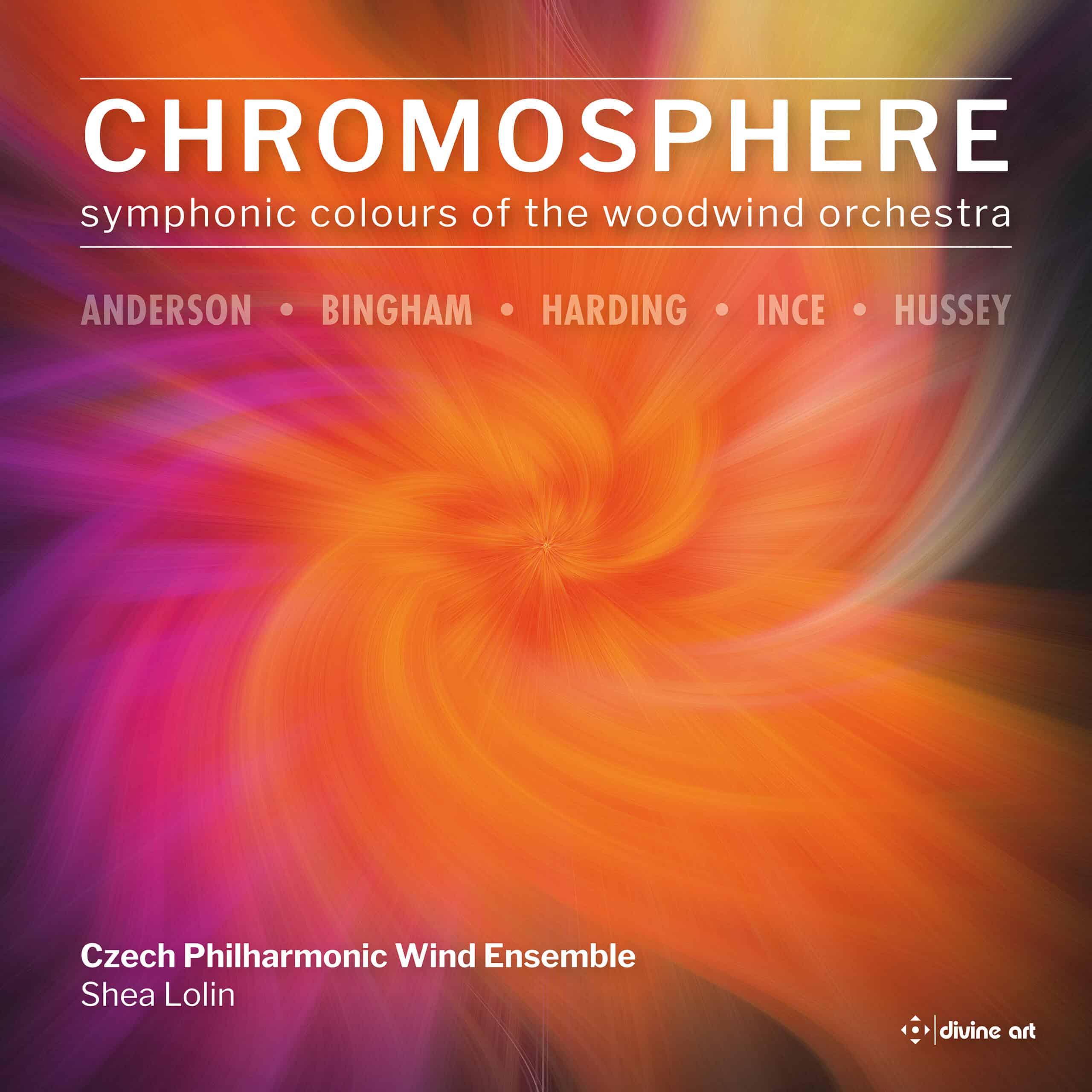Double Reed News
I had not come across a ‘woodwind orchestra’ before. I knew of the eighteenth-century wind bands, best known for Mozart’s Serenade for 13 Winds K361, and I knew that Holst and Vaughan Williams had written works for large wind groups. This CD is a product of more recent activities – during the last 30 years or so – and conductor Shea Lolin plays a prominent role in the renaissance.
The instrumentation of this orchestra is precise. Take a wind quintet, double it, remove the horns (valves not allowed), replace them with a saxophone quartet (made of brass admittedly, but with clarinet-like mouthpieces and oboe-like fingerings), add a cor anglais and contrabassoon, a couple more flutes, and three more clarinets including not only a bass but a contrabass clarinet, and what do you get? A splendid, integrated sound with a particularly rich bass to it, capable (as the album’s strapline says) of a huge array of orchestral colour.
All five composers on the album (Keiron Anderson, Judith Bingham, Charlotte Harding, Kamran Ince and Christopher Hussey) use the band very effectively. Aware that I am writing for oboists and bassoonists, there are not many solos in the orchestral sense. But there are other places one can listen to individual virtuosity; here it is the colours that matter, and it’s rather pleasing when you can’t work out how they are being created, especially with the various combinations of bass instruments.
I listened through the album on a CD player (remember them?) and the pieces work very well as a set; but knowing how people sample music these days I am going to pick out two songs for special mention. That term is surprisingly appropriate for the first one, the final movement of Mozart’s Pets by Judith Bingham. In A Canary Sings by Mozart’s Death Bed, the regret of his early death is palpable, a life unfinished, the canary taking his Spirit elsewhere. Credit goes to Judith Bingham, conductor Shea Lolin, piccolo player Jan Machat, and (especially) to Mozart, who showed us what a range of feeling can be conjured up with a bunch of wind instruments.
The second track is Domes by Kamran Ince, a contemplation of the domed skylines of Rome and Istanbul. I approached the idea of 13 minutes of slow music with some trepidation: how can you express architecture in music? Maybe at the beginning you wonder how he has created these remarkable sounds, but after a while you become immersed in the sheer spaciousness of it: the movement where there is no movement.
But I don’t want to give the wrong impression. This album is great fun, with expert playing and ensemble, well recorded in a good acoustic, especially the bass as I have mentioned twice before. Don’t listen to it on your phone’s speaker!
@divineartrecordingsgroup
A First Inversion Company
Registered Office:
176-178 Pontefract Road, Cudworth, Barnsley S72 8BE
+44 1226 596703
Fort Worth, TX 76110
+1.682.233.4978












